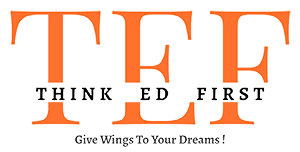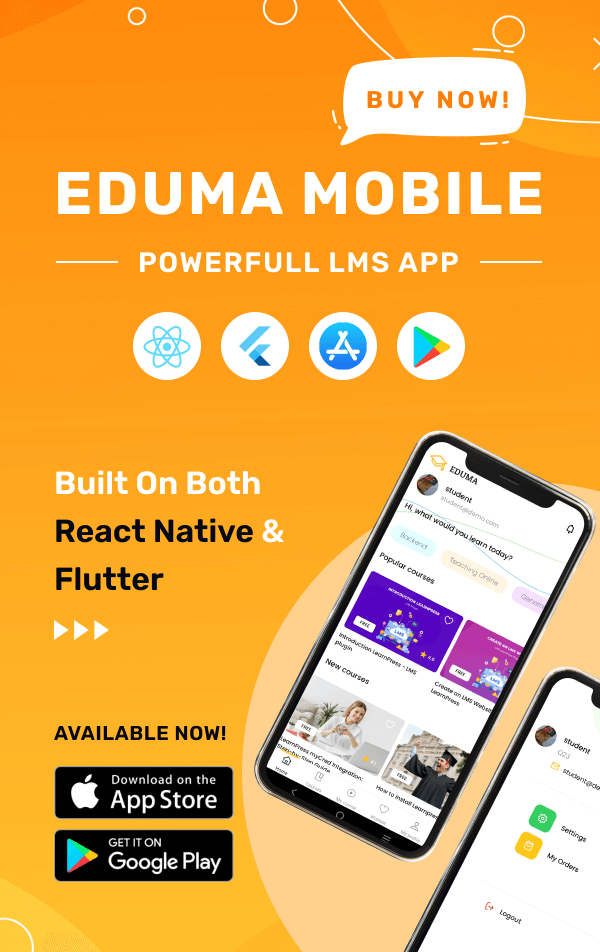Have you ever wondered why so many Indian students are choosing to study medicine abroad? With over 10,000 currently enrolled, pursuing an MBBS degree in Bangladesh has become a popular choice. But what makes this option so attractive?
One of the biggest challenges for students is the cost. The average course fee ranges between ₹25-35 lakhs over six years. This can be a significant financial burden for many families. However, the savings compared to private colleges in India are substantial, often between 40-60%.
To help manage these expenses, Indian banks offer various loan options. For instance, ICICI Bank provides loans up to ₹1 crore for domestic studies and ₹3 crore for international programs. These loans cover tuition, accommodation, and other related costs, making it easier for students to focus on their studies.
In this article, we’ll explore the different loan options available from Indian banks. We’ll compare their benefits and help you find the best solution for your needs. Whether you’re a student or a parent, understanding these options can make a big difference in your financial planning.
Why Pursue an MBBS Degree in Bangladesh?
What makes Bangladesh a top choice for medical studies among Indian students? The answer lies in its affordability, quality, and accessibility. Over the years, Bangladesh has emerged as a preferred destination for those seeking a medical degree abroad.
Growing Popularity Among Indian Students
Thousands of Indian students are now choosing Bangladesh for their medical studies. The country offers globally recognized programs at a fraction of the cost compared to Indian private colleges. This has made it a practical and attractive option for many families.
Cost Advantages Over Indian Private Colleges
One of the biggest draws is the significant cost savings. In India, private medical colleges charge between ₹20-60 lakh for a full course. In contrast, Bangladesh offers the same degree for ₹25-35 lakh. This includes tuition, hostel, and other essential expenses.
Here’s a detailed comparison of costs:
| Expense | Bangladesh | Indian Private Colleges |
|---|---|---|
| Tuition Fees (6 years) | ₹25-35 lakh | ₹20-60 lakh |
| Hostel Costs (per month) | ₹4,500-9,000 | ₹10,000+ |
| Living Expenses (per month) | ₹7,500 | ₹10,000+ |
Additionally, Bangladesh does not require donations for admission, unlike many Indian institutions. Scholarship opportunities through partnered consultancies further reduce the financial burden. This makes it a practical choice for students aiming for a medical degree without excessive costs.
Understanding Education Loans for MBBS in Bangladesh
Planning to study medicine abroad? Understanding your financial options is crucial. Whether you’re covering tuition fees or managing living costs, knowing the details can make a big difference.
Secured vs. Unsecured Financial Options
Secured options require collateral, such as property or fixed deposits. These often come with lower interest rates and higher approval chances. Unsecured options, on the other hand, don’t require collateral but may need a co-signer with a stable income and good credit score.
Covered Expenses: Tuition, Living Costs, and More
Most financial plans cover a wide range of expenses. This includes tuition fees, accommodation, and even pre-departure costs like medical checkups and documentation. Some banks also provide allowances for laptops, study tours, and project work.
- Health insurance is often included, with coverage ranging from ₹5-10 lakhs.
- Airfare and visa fees are also commonly covered, easing the burden of initial expenses.
- Banks like HDFC Credila offer buffers for currency fluctuations, protecting students from unexpected financial changes.
With these comprehensive options, students can focus on their studies without worrying about financial hurdles.
Top Indian Banks Offering MBBS Education Loans
Looking for financial support to pursue your medical studies abroad? Indian banks provide tailored solutions to help students manage their expenses. Let’s explore the top options available.
ICICI Bank: Features and Benefits
ICICI Bank offers comprehensive financial plans for students. Their education loan covers 100% of tuition fees and includes a grace period until MCI registration. Key benefits include:
- Deferred payment until internship completion.
- Exclusive partnerships with institutions like Dhaka National Medical College.
- Lower rates for students in Dhaka and Rangpur.
- Clinical rotation insurance coverage.
- Subsidies for FMGE prep courses.
State Bank of India: Competitive Rates
State Bank of India (SBI) is known for its competitive interest rates and flexible repayment terms. They offer loans up to ₹1.5 crore with a maximum tenure of 15 years. Additional perks include:
- One-year moratorium period plus course duration.
- Concessional rates for female students.
- Hassle-free application process, both online and offline.
HDFC Credila: Tailored for Medical Studies
HDFC Credila specializes in financial solutions for medical students. They provide unsecured loans up to ₹45 lakh with no prepayment charges. Key features include:
- Flexible repayment options up to 15 years.
- Concessional rates for female students.
- Support for currency fluctuations to protect borrowers.
These banks ensure students can focus on their studies without financial stress. Choose the option that best fits your needs and start your journey today.
Eligibility Criteria for Education Loans
Understanding the eligibility criteria is the first step toward securing financial support for your studies. These requirements ensure that applicants meet the necessary standards for approval. Let’s break down the key factors you need to consider.
Academic and Age Requirements
To qualify, applicants must meet specific academic and age criteria. Typically, students should be at least 17 years old and no older than 25 by December 31 of the admission year. Academically, a 10+2 qualification with at least 50% marks in physics, chemistry, biology, and English is mandatory. Reserved category students may have slightly relaxed criteria.
Co-Borrower and Collateral Options
Most banks require a co-borrower or guarantor for approval. This person can be a parent, sibling, or even a non-parent relative. ICICI Bank, for example, accepts up to eight types of relatives as co-borrowers. Axis Bank offers provisions for NRI co-borrowers, making it easier for international families to apply.
Collateral options are also flexible. Banks accept assets like LIC policies, gold ETFs, or property. The collateral value must cover at least 125% of the loan amount. For low-income families, joint borrower schemes are available to ease the financial burden.
- Non-parent guarantors are accepted by PNB, providing more flexibility.
- Collateral alternatives include fixed deposits and government bonds.
- Joint borrower schemes are ideal for families with limited income.
Meeting these criteria ensures a smoother application process. Always check with your chosen bank for specific requirements before applying.
Key Documents Needed for Loan Approval
Securing financial support for your studies starts with gathering the right documents. Proper preparation ensures a smooth application process and increases your chances of approval. Here’s a detailed guide to the essential paperwork you’ll need.
ICICI Bank, for example, follows a 12-point checklist to verify eligibility. This includes equivalence certificates, notarized translations of admission letters, and BM&DC recognition certificates. Each document plays a crucial role in validating your application.
Below is a table summarizing the key documents required:
| Document Type | Details |
|---|---|
| Admission Letter | Notarized translation of Bangladeshi admission letters |
| Recognition Certificate | BM&DC recognition certificates |
| Parental ITR | Income Tax Return verification process |
| Property Documents | Chain of title for collateral |
| Medical Fitness Certificate | Required for health verification |
In addition to these, you’ll need identity proof like a PAN card or Aadhaar card, address proof such as utility bills, and academic records. A completed application form and passport-sized photographs are also mandatory.
Ensure all documents are up-to-date and accurately filled out. Missing or incorrect information can delay the approval process. Double-check with your chosen bank for any additional requirements specific to their policies.
Interest Rates and Repayment Terms
When planning for your future, understanding interest rates and repayment terms is crucial. These factors can significantly impact your financial planning and long-term commitments. Let’s break down the key aspects to help you make informed decisions.
Comparing Fixed vs. Floating Rates
Interest rates come in two main types: fixed and floating. Fixed rates remain constant throughout the repayment period, providing stability and predictability. Floating rates, on the other hand, fluctuate based on market conditions, which can lead to lower initial costs but higher uncertainty over time.
For example, fixed rates typically range from 10.25% to 12.75%, while floating rates vary between 9.25% and 11.25%. Choosing the right option depends on your financial situation and risk tolerance.
Moratorium Periods Explained
A moratorium period allows you to delay repayments until after completing your studies. This period usually includes the course duration plus an additional 6-12 months. During this time, you can focus on your studies without worrying about immediate financial obligations.
- Internship periods are often included in the moratorium, giving you extra time to prepare for repayments.
- Some lenders offer partial payment options during the grace period, helping you manage your finances better.
- Interest capitalization policies vary across lenders, so it’s essential to understand how interest accumulates during the moratorium.
- Residency program extensions may also be accommodated, providing flexibility for students pursuing further specialization.
- Defaulting on repayments can have serious consequences, including holds on your medical license, so it’s crucial to stay on top of your obligations.
Understanding these terms ensures you can plan your finances effectively and avoid unexpected challenges.
Step-by-Step Loan Application Process
Navigating the financial application process can seem overwhelming, but breaking it down into clear steps makes it manageable. Understanding each stage ensures a smoother experience and increases your chances of approval.
The first step is to explore online pre-approval systems. For instance, ICICI Bank offers a 5-minute sanction process, allowing you to check eligibility quickly. This initial step saves time and provides clarity on your options.
Next, gather and prepare your documents. Notarization is often required for certain paperwork, such as admission letters and fee structures. Ensuring all documents are accurate and up-to-date is crucial for a seamless application.
- Validate the university fee structure to confirm the loan amount needed.
- Arrange collateral insurance if your application involves secured options.
- Monitor disbursement timelines, which typically occur within 48 hours after visa approval.
On average, secured applications take about 20 days to process. Staying organized and proactive throughout the process helps avoid delays. By following these steps, you can confidently navigate the application journey and secure the support you need.
Cost of MBBS in Bangladesh: Budget Breakdown
Planning your budget for medical studies abroad is essential to avoid financial stress. Understanding the total amount required helps you prepare better and manage your resources effectively. Let’s break down the expenses to give you a clear picture.
Tuition Fees Across Top Colleges
The tuition fees vary depending on the institution. On average, annual fees range between ₹6-7 lakh, with the total cost for the entire program being ₹29-35 lakh. Some colleges offer scholarships for meritorious students, which can significantly reduce the financial burden.
Living Expenses and Additional Costs
Living costs in Bangladesh depend on the city you choose. Dhaka, being the capital, is more expensive compared to other cities like Chittagong. Here’s a comparison of monthly living expenses:
| City | Accommodation | Food | Transportation |
|---|---|---|---|
| Dhaka | ₹7,000-10,000 | ₹5,000-7,000 | ₹2,000-3,000 |
| Chittagong | ₹5,000-8,000 | ₹4,000-6,000 | ₹1,500-2,500 |
Additional costs include textbooks, which can range from ₹15,000 to ₹50,000 annually. Clinical rotation transportation allowances are also provided by some institutions to ease the financial load.
- Emergency funds should cover at least three months’ expenses for unexpected situations.
- Travel costs vary depending on the airline, with AirAsia often being more affordable than Biman Bangladesh.
- Monthly budget templates can help you track and manage your spending effectively.
By understanding these costs, you can create a realistic budget and focus on your studies without financial worries.
Challenges and How to Overcome Them
Facing challenges during the loan application process is common, but knowing how to tackle them can make a difference. Many students encounter hurdles that delay or even prevent approval. Understanding these issues and preparing in advance can significantly improve your chances of success.
Common Reasons for Loan Rejection
One of the primary reasons for rejection is insufficient income proof. Lenders need assurance that the co-borrower can support the repayment process. Another factor is a low credit score, which raises concerns about financial responsibility. Missing or incomplete documentation, such as admission letters or fee structures, can also lead to delays or denials.
Collateral valuation is another critical aspect. If the asset’s value doesn’t meet the lender’s criteria, the application may be rejected. Additionally, students who fail to meet academic or age requirements often face challenges in securing approval.
Tips to Strengthen Your Application
To improve your chances, start by enhancing your credit score. A six-month timeline for credit improvement can make a significant difference. Pre-valuing collateral assets ensures they meet the lender’s criteria, reducing the risk of rejection.
Here are some actionable tips:
- Obtain loan counseling certificates from approved agencies to demonstrate financial awareness.
- Negotiate admission letters to include detailed fee structures, making the application process smoother.
- Integrate scholarship details into your application to show additional financial support.
- Use co-signed fixed deposits, which can boost approval rates by up to 20%.
By addressing these challenges proactively, you can strengthen your application and move closer to achieving your goals.
Post-Loan Disbursement: What to Expect
Once your financial support is approved, it’s important to know what happens next. Banks like ICICI ensure direct payments to universities within five days, making the process seamless for students. This eliminates the need for manual transactions and reduces delays.
After disbursement, quarterly academic progress reporting is often required. This helps the bank monitor your performance and ensures you’re on track. If your GPA falls below the required threshold, you may receive a warning period to improve.
Foreign exchange monitoring systems are also in place to manage currency fluctuations. This protects students from unexpected financial changes during their studies abroad. Additionally, top-up provisions are available for extended courses, providing flexibility if your program takes longer than expected.
Managing debt during house jobs or internships can be challenging. Many banks offer grace periods or forbearance options, allowing you to postpone payments until you start earning. Income-based repayment plans are another option, capping payments at 10-15% of your discretionary income.
For those pursuing postgraduate studies, loan restructuring options are available. This allows you to extend the repayment tenure or adjust the terms to better suit your financial situation. Consolidating multiple loans can also simplify repayments and reduce stress.
- Direct university payments ensure timely fee settlements.
- Quarterly progress reports keep you accountable and focused.
- Foreign exchange systems protect against currency risks.
- Top-up provisions support extended or additional courses.
- Grace periods and repayment plans ease financial pressure during internships.
- Restructuring options provide flexibility for postgraduate studies.
Understanding these post-disbursement processes helps you plan better and avoid surprises. Stay informed and proactive to make the most of your financial support.
Conclusion
Securing the right financial support can make all the difference in achieving your medical career goals. With options like ICICI, SBI, and HDFC Credila, students can access loans up to ₹1 crore, covering tuition, accommodation, and other expenses. These banks offer flexible repayment terms, competitive interest rates, and additional benefits tailored for medical studies.
Looking ahead, digital loan processing is becoming more streamlined, making applications faster and more efficient. For those ready to take the next step, booking a consultation with Rus Education can provide personalized guidance and support.
With a 92% visa approval rate for students who secure proper financing, the path to your medical degree is clearer than ever. Start planning today and turn your aspirations into reality.





